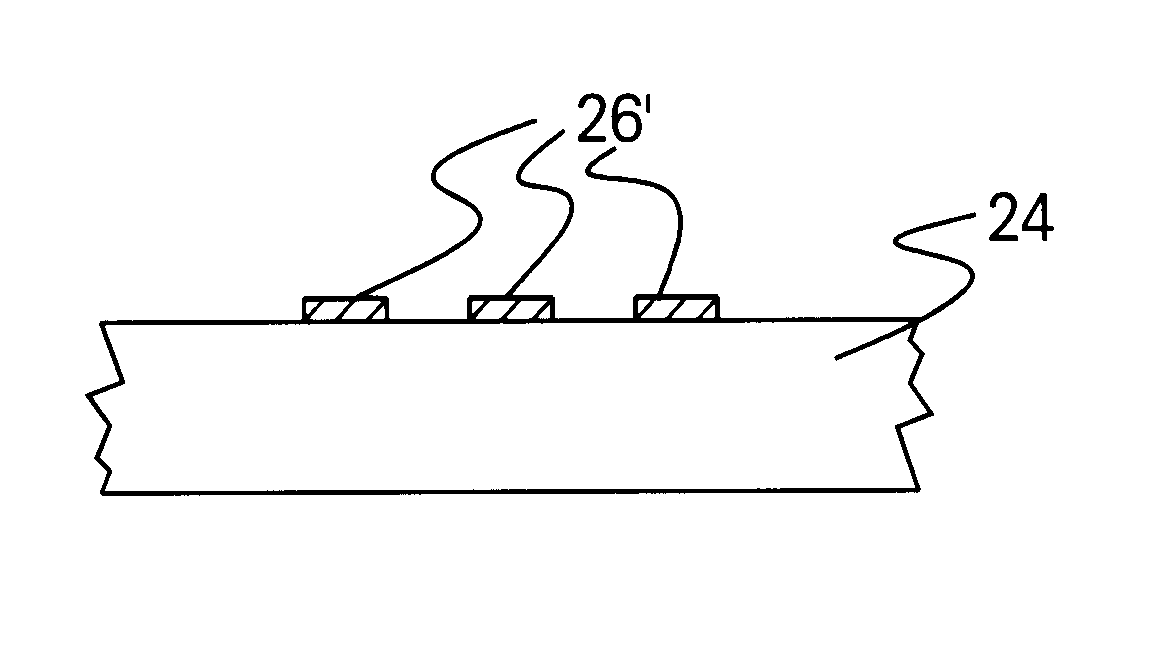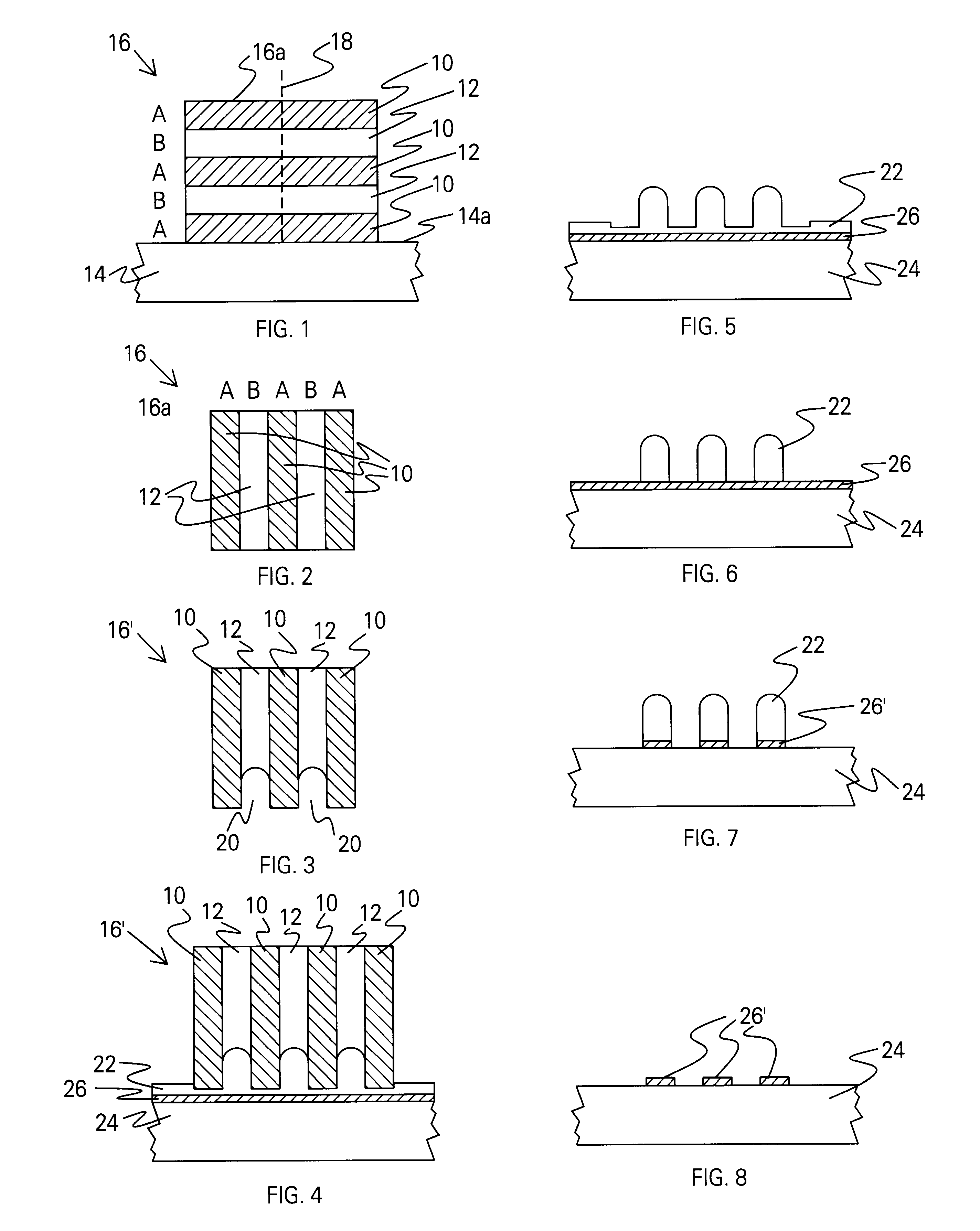Nanoscale patterning for the formation of extensive wires
a technology of nanoscale and wires, applied in the field of nanoscale patterning for the formation of extensive wires, can solve the problems of limiting the advancement of lithographically defined patterning, degrading devices, and difficulty in controlling the placement of these freestanding wires
- Summary
- Abstract
- Description
- Claims
- Application Information
AI Technical Summary
Benefits of technology
Problems solved by technology
Method used
Image
Examples
Embodiment Construction
Nanoscale strips for device applications are fabricated by depositing composite thin films with different materials A and B, as illustrated in FIG. 1. Essentially, as described in greater detail below, a plurality of alternating layers of A material 10 and B material 12 are deposited on a major surface 14a of a substrate 14 to form a stack 16, also having a major surface 16a, parallel to the major surface of the substrate. Preferably, the material having the least lattice mis-match with the substrate 14 is deposited in order to keep a smooth growth surface and flat, sharp interfaces between materials 10 and 12.
The layers 10, 12 are then cleaved along a line 18 normal to the major surface 16a of the stack 16 to expose the cross-section, as shown in FIG. 2. Cleaving is performed by any conventional technique useful in cleaving a plurality of alternating layers of dissimilar materials. Such techniques are well-known in the art for the materials used for layers A and B, which are discus...
PUM
 Login to View More
Login to View More Abstract
Description
Claims
Application Information
 Login to View More
Login to View More - R&D
- Intellectual Property
- Life Sciences
- Materials
- Tech Scout
- Unparalleled Data Quality
- Higher Quality Content
- 60% Fewer Hallucinations
Browse by: Latest US Patents, China's latest patents, Technical Efficacy Thesaurus, Application Domain, Technology Topic, Popular Technical Reports.
© 2025 PatSnap. All rights reserved.Legal|Privacy policy|Modern Slavery Act Transparency Statement|Sitemap|About US| Contact US: help@patsnap.com


